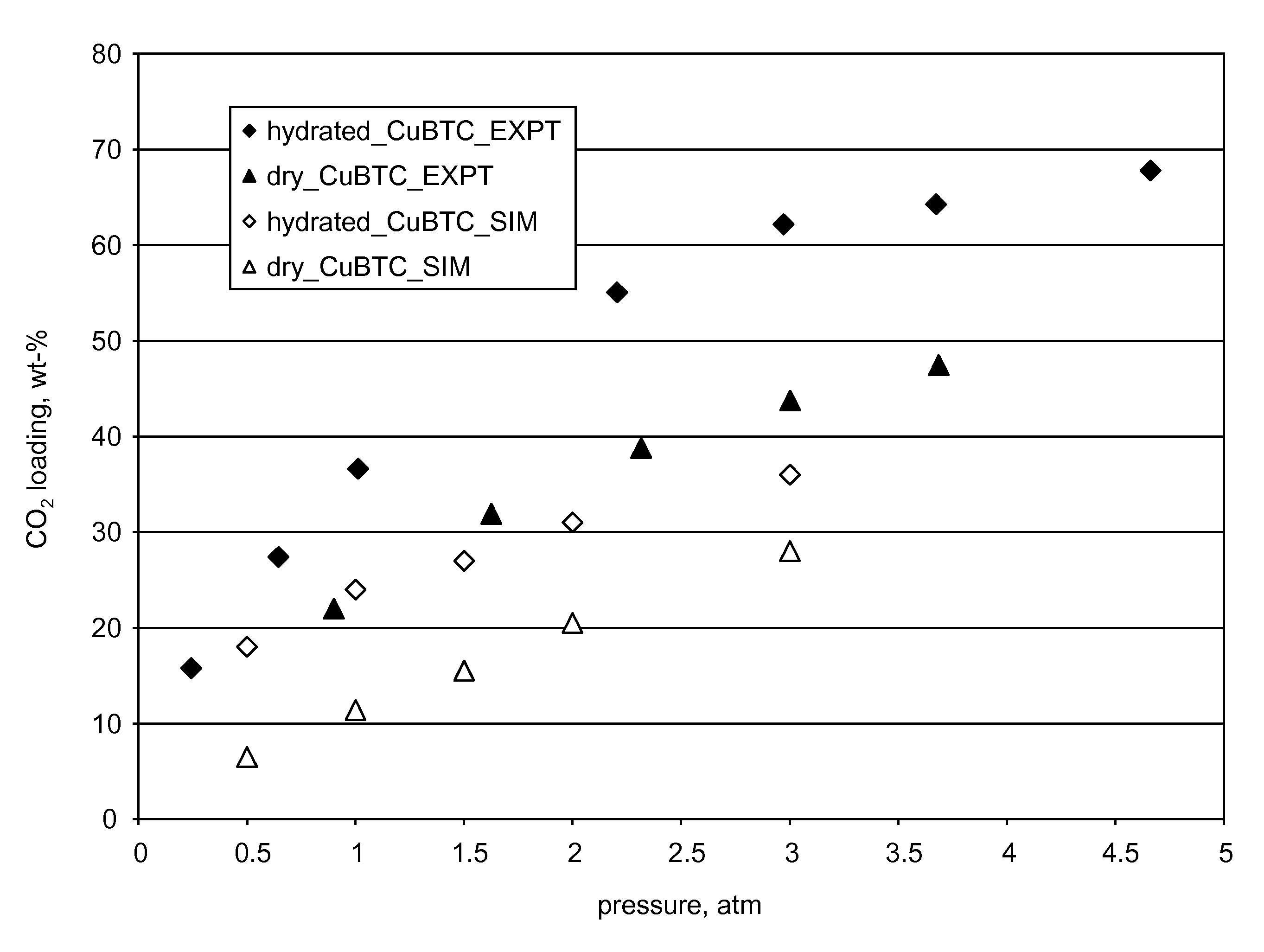Gas adsorption on metal-organic frameworks
a technology of metal organic frameworks and gas adsorption, which is applied in the field of materials, can solve the problems of high cost and inefficiency of current methods, too expensive known methods to be commercially feasible for expanded use without, and achieve simple physisorption. , the effect of increasing the mof's capacity for carbon dioxid
- Summary
- Abstract
- Description
- Claims
- Application Information
AI Technical Summary
Benefits of technology
Problems solved by technology
Method used
Image
Examples
Embodiment Construction
[0010]Reference will now be made in detail to presently preferred compositions or embodiments and methods of the invention, which constitute the best modes of practicing the invention presently known to the inventors.
[0011]As used herein “linking ligand” means a chemical species (including neutral molecules and ions) that coordinate two or more metals resulting in an increase in their separation, and the definition of void regions or channels in the framework that is produced. Examples include 4,4′-bipyridine (a neutral, multiple N-donor molecule) and benzene-1,4-dicarboxylate (a polycarboxylate anion).
[0012]As used herein “non-linking ligand” means a chemical species that is coordinated to a metal but does not act as a linker.
[0013]As used herein “guest” means any chemical species that resides within the void regions of an open framework solid that is not considered integral to the framework. Examples include: molecules of the solvent that fill the void regions during the synthetic...
PUM
| Property | Measurement | Unit |
|---|---|---|
| temperature | aaaaa | aaaaa |
| diameter | aaaaa | aaaaa |
| period of time | aaaaa | aaaaa |
Abstract
Description
Claims
Application Information
 Login to View More
Login to View More - Generate Ideas
- Intellectual Property
- Life Sciences
- Materials
- Tech Scout
- Unparalleled Data Quality
- Higher Quality Content
- 60% Fewer Hallucinations
Browse by: Latest US Patents, China's latest patents, Technical Efficacy Thesaurus, Application Domain, Technology Topic, Popular Technical Reports.
© 2025 PatSnap. All rights reserved.Legal|Privacy policy|Modern Slavery Act Transparency Statement|Sitemap|About US| Contact US: help@patsnap.com


